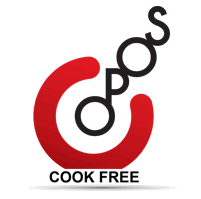Techniques – #Z for Zoned Cooking



Indian meals consist of multiple dishes served together as a thali. Even for breakfast or dinner, multiple side-dishes accompany the main dish. With lifestyles getting busier, the number of dishes slowly decreased to one or two. Even this was sometimes skipped, with rice/ roti/ idli/ dosa being paired with just pickles.
There was a great need to cook multiple dishes together. The concept is not new. Earlier pressure cookers came with vessels that can be stacked over each other. Rice, dal and vegetables would be loaded in these vessels and cooked together. After cooking, the vegetables and dal would be removed and sauteed/ simmered with spices to become dry curries or gravies. There were two problems with this technique:
1. The vegetables invariably got cooked to a mush, losing colour, texture, nutrients and flavour.
2. This also called for a finishing step, for the dal/ vegetables to be converted into curries.
A dry curry and a gravy served with rice/ roti forms the daily meal across India. We first wanted to make this happen, in a single shot. In retrospect, what we were trying to do was simple. We were trying to extend the pressurebaking concept to accommodate multiple recipes. It sounds simple now, but it was not very intuitive. The core idea itself took a long time to ink in, mainly because of our cultural conditioning.
First, the concept of cooking different dishes together seemed alien and weird. How do we keep the dishes separate? Won’t everything taste the same? Won’t all flavours mix together? Is this ‘weird’ cooking really necessary? Getting the answers to these questions took repeated trials and validations.
Slowly, we realised that there is no intermingling of flavors because the zones are physically separate. Because the cooking time is too short. Some mixing did happen when we used a water buffer. But we learnt that the water buffer in contact with different zones turns into stock, which can be mixed in with any curry, making them more flavourful. We also learnt to choose combinations carefully, to get the exact flavour profile we wanted. We learnt to ensure dishes with very contrasting flavor profiles are not zoned together. We soon found cooking a feast was no different than cooking a single dish once you have ingredients and curry bases ready.
Multiple OPOS techniques had to come together to make this happen.
1. Waterless Cooking ensured multiple dishes stayed in their separate zones and did not get mixed up.
2. Cut size variation ensured that any combination of vegetables can be cooked together, without overcooking or undercooking.
3. Pressurebaking ensured the inherent taste of the ingredients was maximised without reliance on elaborate spice mixes. This is the reason why each dish smells and tastes different, even when cooked together.
4. Layering, PIP, Nesting & MPOS were used to balance cooking times and add curry bases
When we got comfortable with the concept, the separators were designed. This tool supercharged the technique. Members started innovating by cooking up elaborate thalis. Multicourse, elaborate thalis came to stay in many homes.
To cook these thalis, the ingredients are layered in different zones over a water or oil buffer. Other spices and building blocks are layered over them. The building blocks can be OPOS staples or curry bases (tamarind paste, cooked dal, coconut paste, caramelised onion-tomato paste or nut paste). These are pressurebaked together, removed separately and diluted. Almost all regional and ethnic Thalis were now rewritten to use this technique. A major OPOS cookbook, ‘The Story Of India Through Food’ was written to record these thalis.
This technique was later extended to cook multiple halwas, different varieties of tadkas, meal combos (main dish & side dish) and multiple CPF snacks, all at one shot. It is fitting this is recorded as the final technique as this relies on many of the previous techniques to make magic happen. A ready to serve thali in minutes, when you open the pot!
